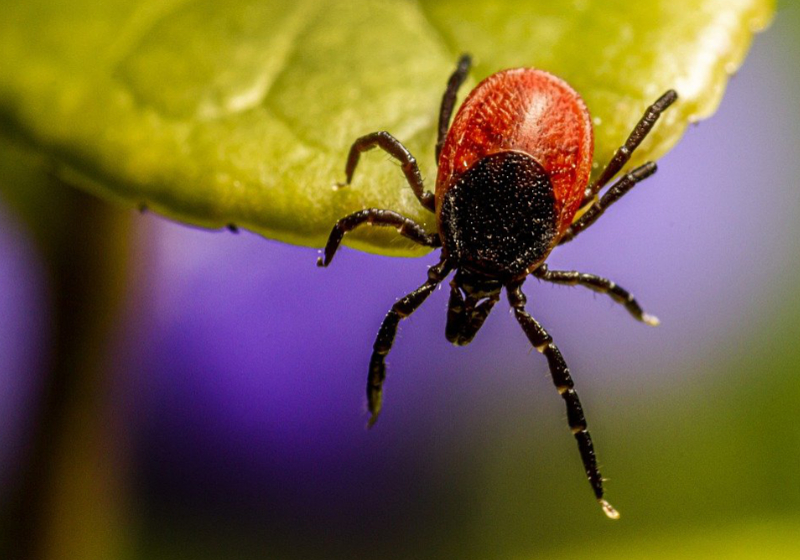Nearly two months into the school year, Illinois public health officials said they have verified COVID-19 outbreaks in at least 44 school buildings across the state, but they declined to say where those cases occurred and acknowledged they may not know the full scope of the virus’s spread in schools.
Many other states already publish data on outbreaks in schools. But Illinois so far has released only county-level data about COVID-19 cases in people younger than 20.
Unlike many other states, Illinois doesn’t publish the number of cases linked to schools or which schools have been affected — even as parents and educators try to assess whether in-person learning is safe. State health officials released overall numbers at the request of ProPublica Illinois and the Chicago Tribune.
With more than 1,800 public schools operating in person at least part time, along with an unknown number of private schools, the outbreaks represent a tiny fraction of Illinois schools in session, according to an analysis of state education data. Most outbreaks have been small — two or three cases at each school — but at least 105 students and 73 employees at public and private schools have been affected.
State health officials said many COVID-19 cases seen among children are tied to gatherings outside school and other community events, while acknowledging that local contact tracing efforts likely have missed some school-related cases.
In all, 8,668 Illinois children ages 5 to 17 have tested positive for the virus from Aug. 15, when schools started to reopen, to Oct. 2, state health officials said. That amounts to about 180 new infections among children each day, on average, since school returned. Between March and early August, there were 11,953 confirmed COVID-19 cases among children, an average of about 72 a day. Fewer than five school-aged children have died of the disease, according to the Illinois Department of Public Health.
Even as parents, school leaders and others in the state have pushed for more transparency about cases related to schools, the state health department said this week that it continues to weigh whether to publish data on school-driven outbreaks and has no timeline to decide whether to do so.
IDPH spokeswoman Melaney Arnold said health officials are concerned that publishing COVID-19 data tied to schools could identify students and staff and violate their privacy. The department publishes case counts for other facilities, including nursing homes and psychiatric hospitals. It also specifies the number of cases in people younger than 20 in each county.
“Obviously we want to be as transparent as possible and get information out that people can use. That’s why we have on our website the county-level data. That way, counties can make their own decisions about what they want to do,” Arnold said. “We’ve certainly received a lot of interest in this data. We’ve received interest from many different groups.”
Illinois Gov. J.B. Pritzker was asked at a news briefing Wednesday whether the state will publish data about school-related infections. He did not commit to it.
“I’m sure that IDPH is looking at school-specific reporting,” Pritzker said. “I’m very much in favor of trying to get our kids back into in-person learning; however, we want to make sure that it’s safe. And it’s very difficult at the state level to dictate how each school — of the 4,000-plus schools that we’ve got across the state of Illinois — can do that.”
Other states make district- or school-level outbreak data public online, including Ohio, Indiana and Mississippi, which post data about public and private schools; Michigan and Tennessee, which list new and ongoing outbreaks; and Kentucky, which provides student and staff case numbers “out of transparency and as quickly as possible,” according to the state website with school data.
A school outbreak is defined as two or more confirmed cases within 14 days of the start of symptoms in people who do not share a household and did not have close contact in another setting.
Nearly two-thirds of the confirmed school outbreaks resulted in two or three infections, and about a third led to between four and nine cases. One school had an outbreak that affected 18 people.
Health department officials are also tracing current school outbreaks in which the total number of infected people isn’t yet known, said Dr. Connie Austin, an infectious disease epidemiologist with the IDPH. Austin said the department is reluctant to estimate the risk of attending school — each community is different — but emphasized that students and staff should wear masks and keep socially distant when together.
“We need a little more time to be able to evaluate these outbreaks,” Austin said. “It is certainly happening; that’s why schools need to take the precautions they can take.”
In Illinois, students and staff at about 25% of school districts are operating exclusively in person, and nearly 70% are spending at least some of the week in person. A total of about 685,000 students attend school in these districts. Some of the state’s largest school districts — including Chicago and U-46 in Elgin — are operating entirely remotely for now.
Many school districts gave parents a choice between in-person classes and e-learning but allow them to switch only during school breaks, including at the end of a grading period. For both parents and school officials, it would be helpful to know more about virus transmissions at schools, one parent advocate said.
“Parents are in the dark about infection rates. How can we make an informed decision about whether or not to send our kids back to school when we don’t know how it is actually going at the schools that have returned to in-person school?” said Mary Fahey Hughes, a parent liaison for Raise Your Hand for Illinois Public Education, a parent group that advocates for public education.
Michigan provides weekly updates on outbreaks in schools throughout the state, and Gov. Gretchen Whitmer’s administration recently ordered schools to notify the public within 24 hours of any confirmed student and staff coronavirus cases. The push for transparency came from the Michigan Association of Superintendents & Administrators, among other groups, after inconsistent reporting by schools.
“The only way to get through the pandemic is using transparency,” said Peter Spadafore, deputy executive director of the Michigan superintendents group. By publishing statewide figures, school leaders “can begin to understand what measures were successful in mitigation and stopping outbreaks.”
“When we talk about returning to school in person … we then have a lot of data to understand what works and what doesn’t,” Spadafore said.
Emily Oster, a Brown University economics professor, has been working with school administrators across the country to create a national dashboard to track the virus’s spread. Participation in the dashboard is voluntary; about 115 Illinois schools are included so far, with 0.13% of students testing positive in late September, about the same as the national rate.
“If we don’t have public accountability reporting, people don’t know what is going on. That is making it hard for them to make choices,” Oster said. “There are a lot of states and places that are hiding behind privacy, and the push I keep trying to make to people is it would be good to release this data.”
Nationally, cases among children and teens peaked in July, declined in August and then started rising again in early September, according to a recent report from the U.S. Centers for Disease Control and Prevention in Atlanta. Infection rates were twice as high in teens as they were in children. The CDC said that in-person learning can be safe when community transmission rates are low, but that it could increase risk in communities where transmission is high.
Illinois data suggests that many cases among teens involve outbreaks at colleges, not at K-12 schools. There were 15,464 confirmed cases among people younger than 20 between Aug. 16 and the last week of September, according to IDPH. But in roughly the same time period, the agency documented only 178 connected to K-12 schools.
Large outbreaks on university campuses in Illinois and across the country have been documented, though, contributing to case spikes in college towns.
For example, cases have surged recently among younger people in McLean County, in central Illinois. But Jessica McKnight, administrator of the county health department, noted that many of those cases were in the 18- and 19-year-old range. Illinois Wesleyan University and Illinois State University have both reopened in the county.
She also said most of the virus spread in K-12 children so far has been tied to community sports and other gatherings unrelated to school.
“We’re making it as safe as possible within the walls of the school,” McKnight said. “You have control over what happens inside the building. It’s outside the building … that may be more concerning.”
School districts have taken varied approaches to informing their communities about COVID-19 cases. While some publish real-time dashboards, others alert parents only with form letters when a positive case is discovered. Some send out periodic updates tallying the week’s cases.
North suburban New Trier Township School District 203 updates an online dashboard twice a week with the number of staff and student COVID-19 cases, as well as the number in quarantine. After starting remotely for all but select students, the high school reopened Monday with 25% of students in person at a time. As of Wednesday, there were five positive cases among students and none among staff, according to the district. Nearly 60 students and 13 employees are in quarantine, according to the dashboard.
Mike Sutton, superintendent of Highland Community Unit School District 5 in Madison County, near St. Louis, doesn’t publish a dashboard but sends families a weekly summary with a tally of the week’s confirmed COVID-19 cases. He said there have been about 25 confirmed or presumed cases in the district since the school year began.
“This has not been ideal, but we believe that’s how important it is to have kids in school,” Sutton said.
In west suburban Geneva District 304, about 5,500 students and staff members have been learning in person since Aug. 31. There have been 26 confirmed COVID-19 cases among students and school workers, though none of the cases is linked to exposure at the schools, according to district spokeswoman Laura Sprague.
“These confirmed cases are from community-based exposure rather than in our schools, which shows the health and safety precautions we put in place are working,” Sprague said.
Students and staff wear masks during the school day; families are required to complete a daily symptom screening and certify that nobody in the family has COVID-19 symptoms. District officials email families and staff whenever they learn of a positive case in the school community, Sprague said.
Olympia District 16 in McLean County publishes its own online dashboard that updates daily.
“Being transparent with numbers, cases, etc., has helped and our staff has been positive about being in person,” said Laura O’Donnell, the district’s superintendent.
County health officials said they reviewed districts’ return-to-school plans and made suggestions when necessary, and they have advised districts what to do when they have had positive cases.
In St. Clair County, in southern Illinois, school officials alert the health department when someone tests positive and they work together to trace exposure. Some school employees have taken the county’s contact tracing course to understand the process, said the health department’s executive director, Barb Hohlt.
The county, like others across the state, does not publish the number of cases tied to schools, Hohlt said.
“We will follow the lead” of the state health department, Hohlt said. “We are leaving it up to each school (to decide what to disclose about) cases in a school. We will inform parents or teachers or employees only if there is a need to know they have been involved in a case or contact.”
Statewide, there have been 307,641 confirmed cases of COVID-19 and 8,878 deaths attributed to the virus as of this article.
*** Clarification, Oct. 22, 2020: This story originally said some Chicago Public Schools students will return to classes in November. The district hopes to begin in-person learning for preschool and certain special education students in the second quarter, which begins in November.

 by Terri Dee
by Terri Dee









